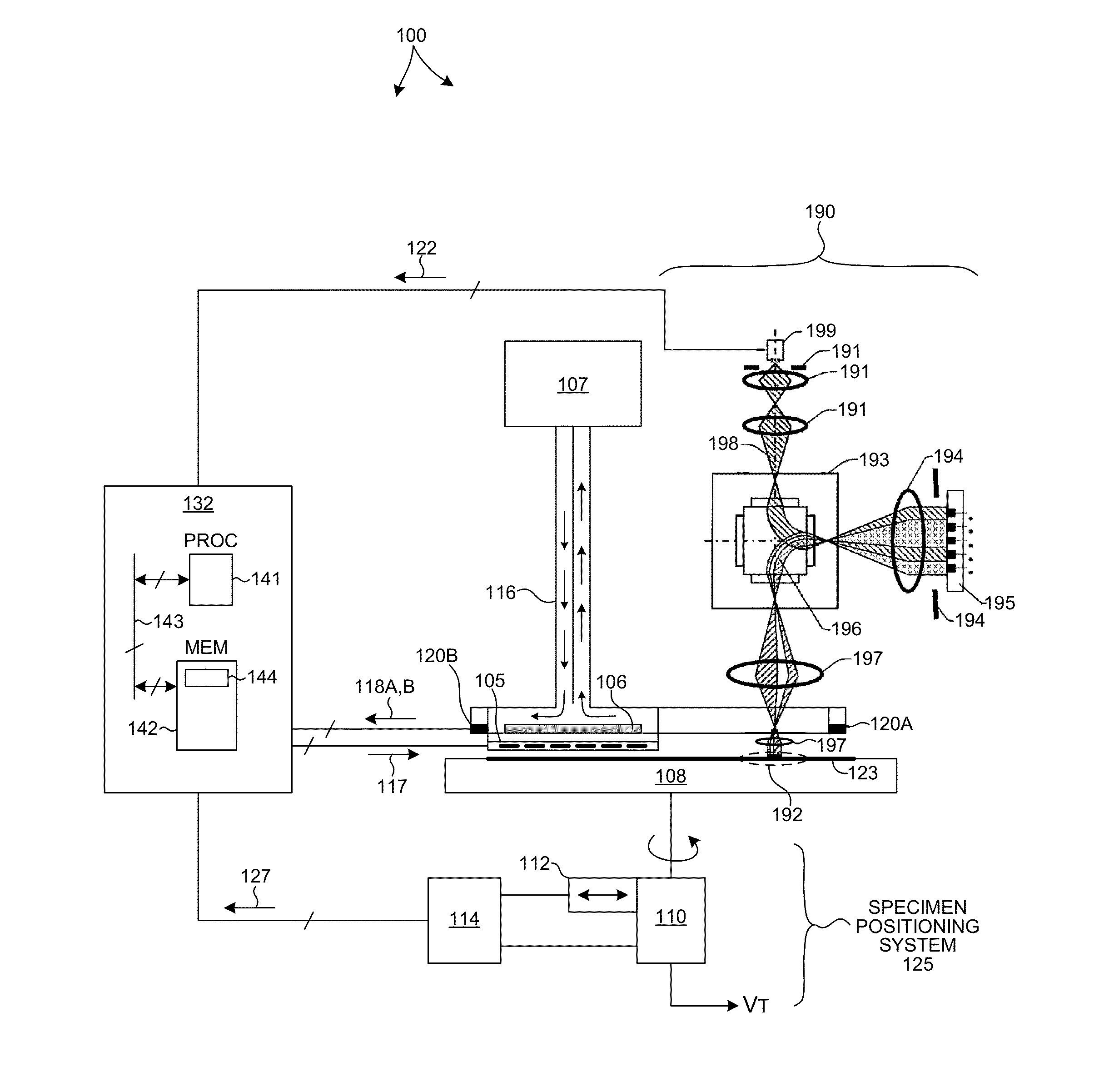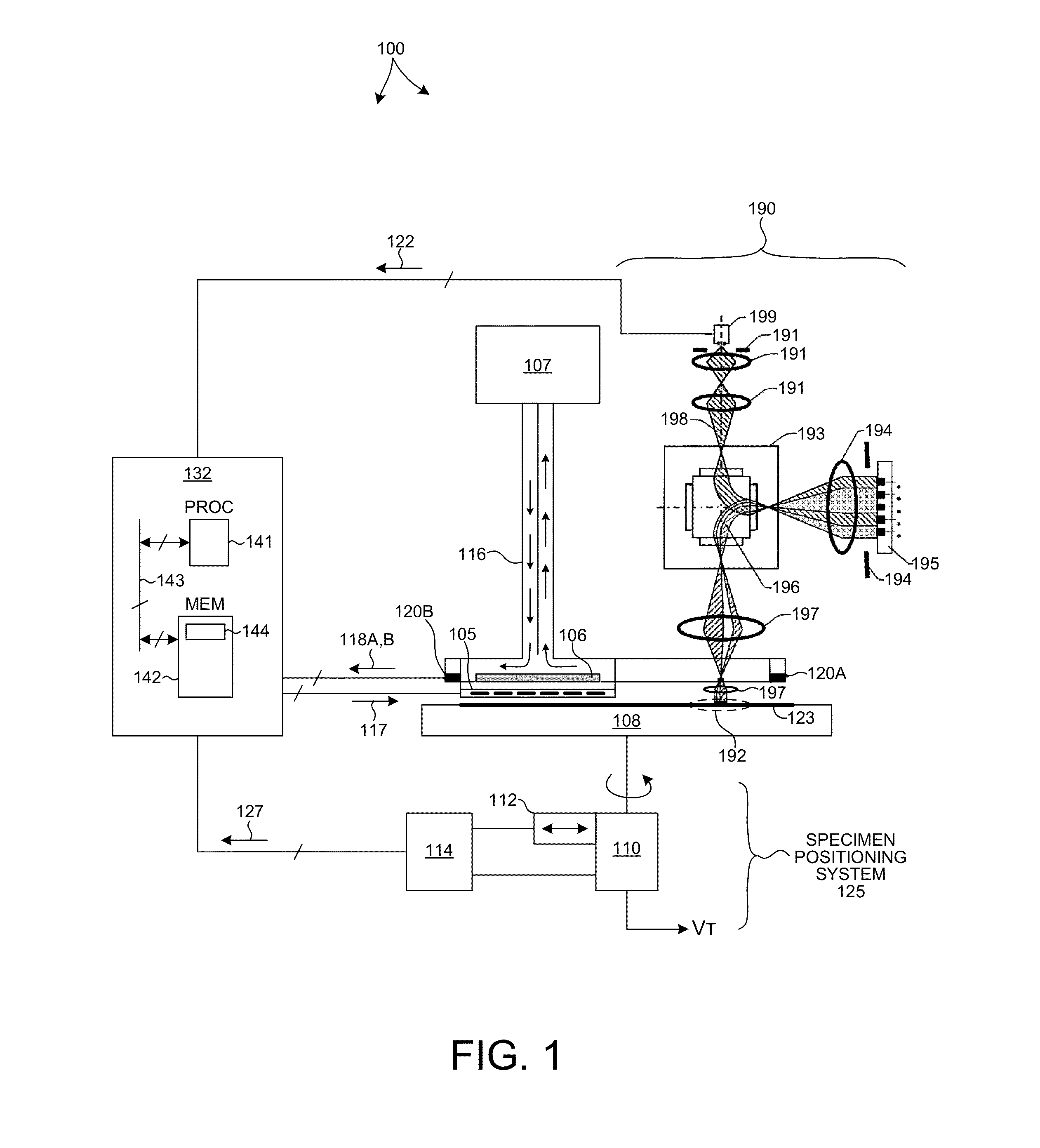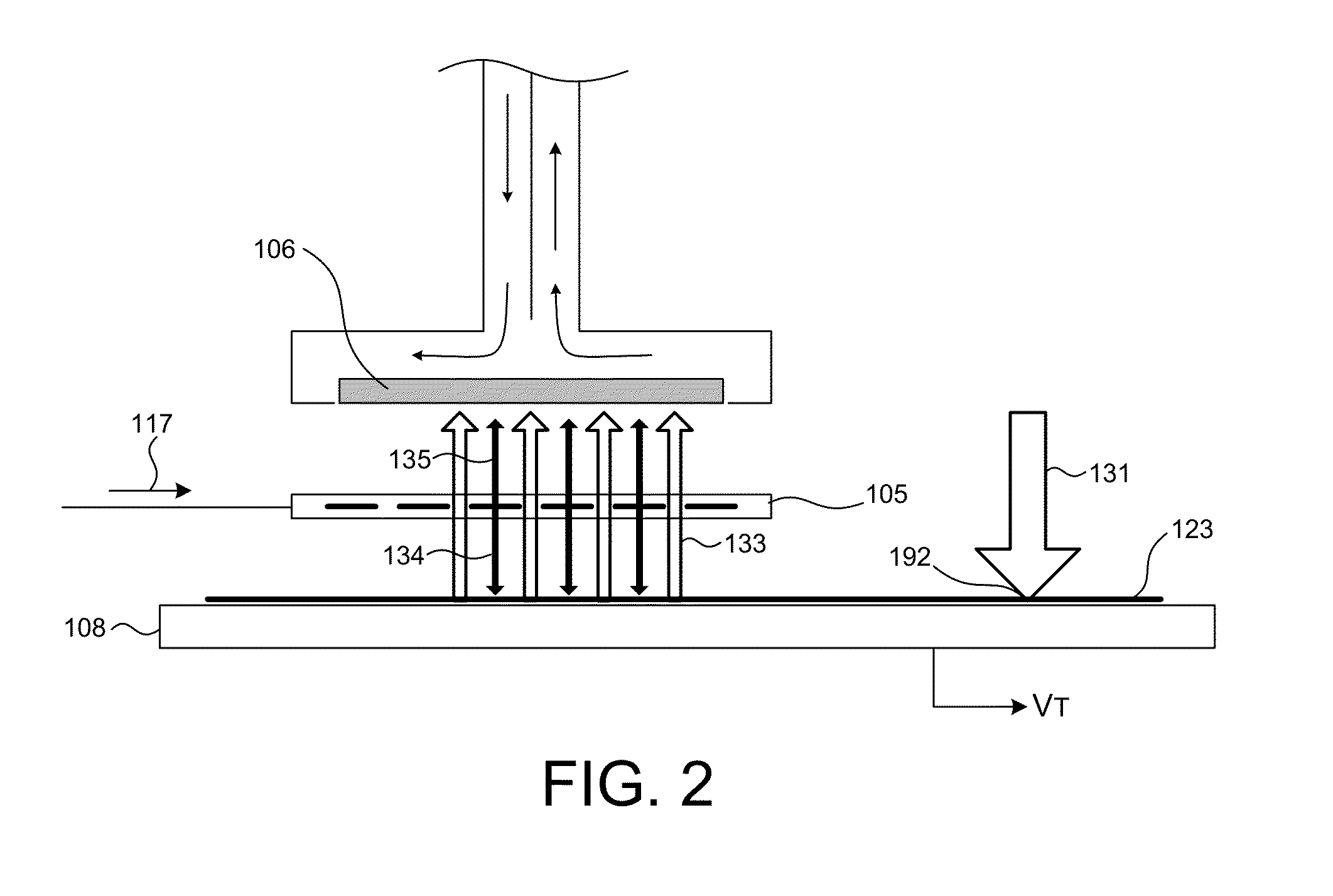Heat Removal From Substrates In Vacuum
a vacuum process and substrate technology, applied in the field of wafer processing systems, can solve the problems of affecting the processing efficiency of the wafer, affecting the quality of the wafer, and introducing a significant amount of heat into the specimen, so as to increase or decrease the area of the cooling element exposed.
- Summary
- Abstract
- Description
- Claims
- Application Information
AI Technical Summary
Benefits of technology
Problems solved by technology
Method used
Image
Examples
Embodiment Construction
[0031]Reference will now be made in detail to background examples and some embodiments of the invention, examples of which are illustrated in the accompanying drawings.
[0032]FIG. 1 is a simplified schematic view of one embodiment of a semiconductor processing system 100 that may be used to perform specimen cooling methods described herein. In the illustrated embodiment electrons are projected onto a specimen 123. The system 100 includes specimen positioning system 125 that is configured to support and move specimen 123 during projection of electrons onto the specimen. The system 100 also includes projection subsystem 190. Projection subsystem 190 is configured to project an electron beam onto specimen 123 while specimen positioning system 125 is moving specimen 123. Projection subsystem 190 includes electron source 199, illumination electron-optics 191, magnetic prism 193, objective electron-optics 194, dynamic pattern generator (DPG) 195, and projection electron-optics 197.
[0033]El...
PUM
 Login to View More
Login to View More Abstract
Description
Claims
Application Information
 Login to View More
Login to View More - R&D
- Intellectual Property
- Life Sciences
- Materials
- Tech Scout
- Unparalleled Data Quality
- Higher Quality Content
- 60% Fewer Hallucinations
Browse by: Latest US Patents, China's latest patents, Technical Efficacy Thesaurus, Application Domain, Technology Topic, Popular Technical Reports.
© 2025 PatSnap. All rights reserved.Legal|Privacy policy|Modern Slavery Act Transparency Statement|Sitemap|About US| Contact US: help@patsnap.com



